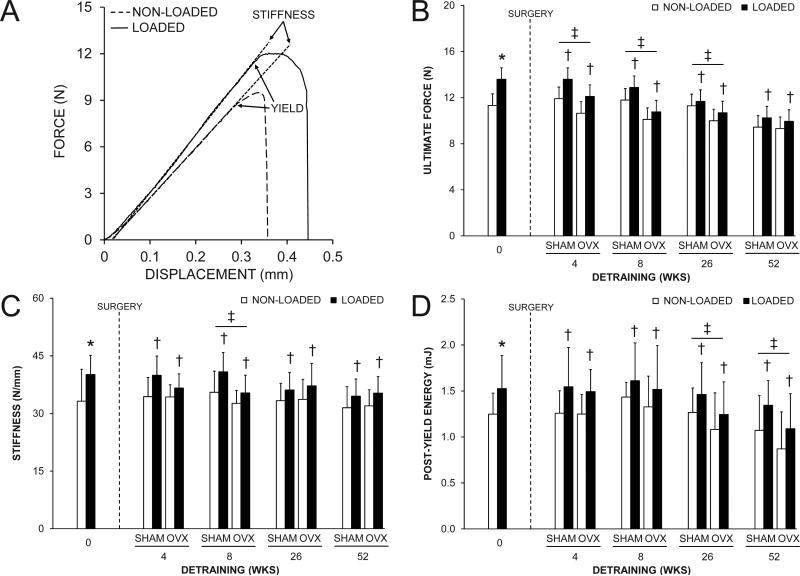Fig. 3.
The effect of loading and surgery at select detraining time points on midshaft tibia mechanical properties. A) Representative force vs. displacement curves for a pair of loaded and non-loaded tibias from the 0 wks detraining group. Loading increased: A) ultimate force (peak of the curve on the y-axis in panel A); C) stiffness (slope of the linear portion of the curve in panel A), and; D) post-yield energy to failure (area under curve between yield point and failure in panel A), as assessed in the 0 wks detraining group (*p < 0.05). There were no statistical interactions between loading and surgery in any detraining time point group for any of the properties assessed. Loaded tibias had greater ultimate force, stiffness and post-yield energy to failure than non-loaded tibias in each detraining time point group (†p < 0.05 for loading main effect). OVX animals had less ultimate force in the 4, 8 and 26 wks detraining groups, less stiffness in the 8 wks detraining group, and less post-yield energy to failure in the 26 and 52 wks detraining groups than SHAM animals (‡p < 0.05 for surgery main effect). Data represent body mass corrected means ± SD.

